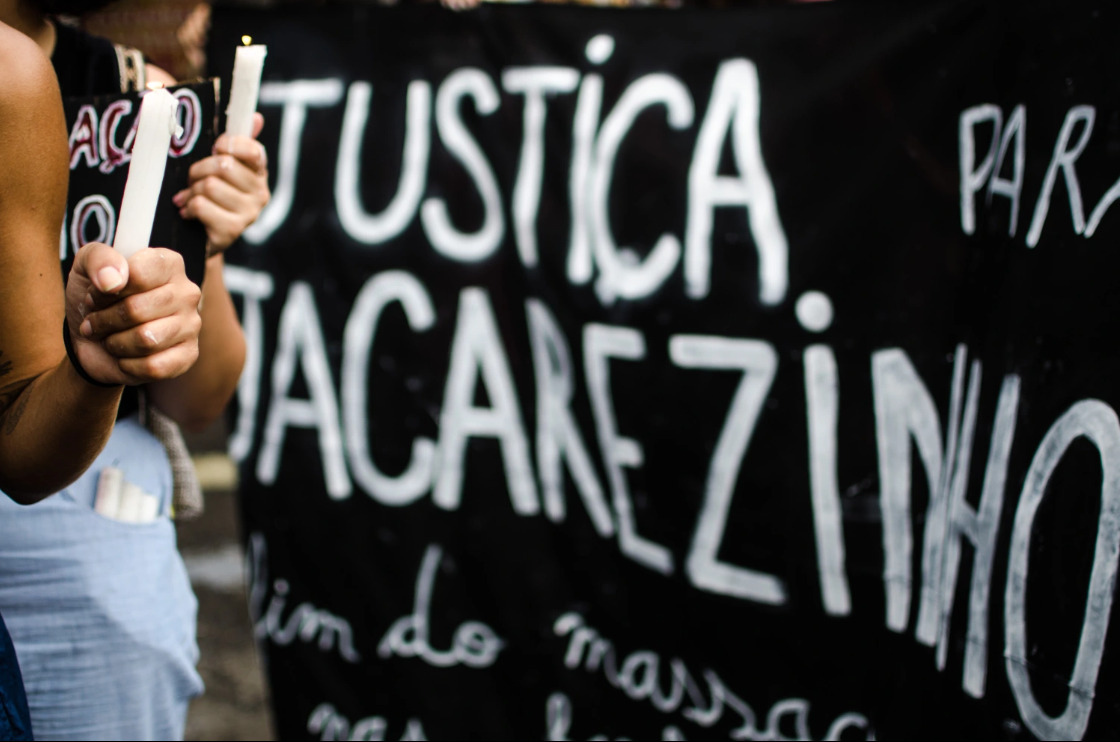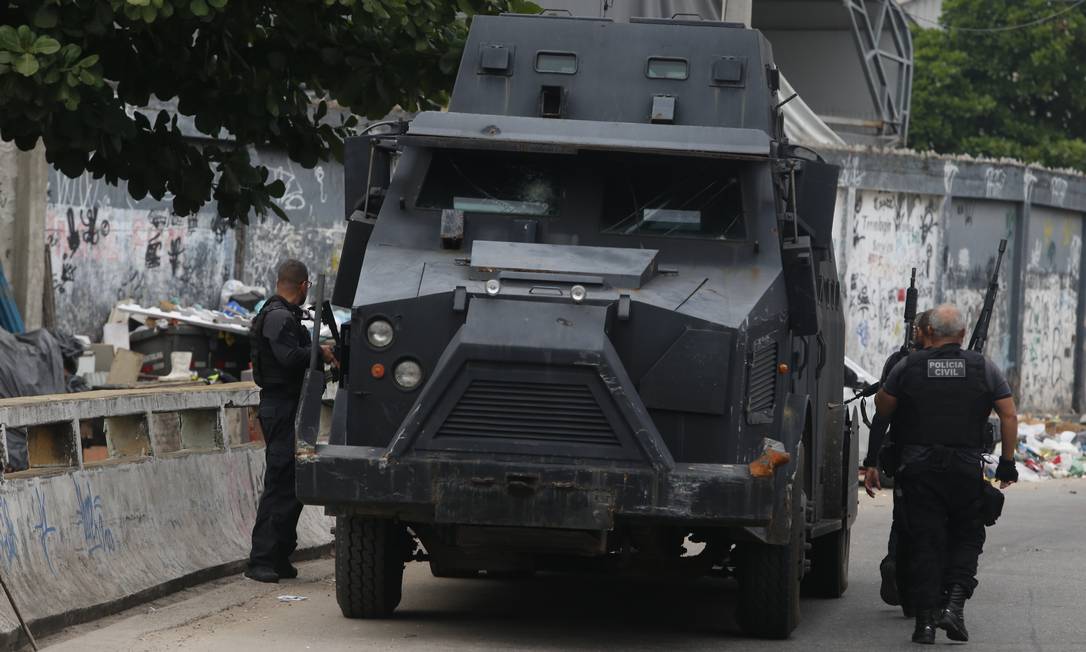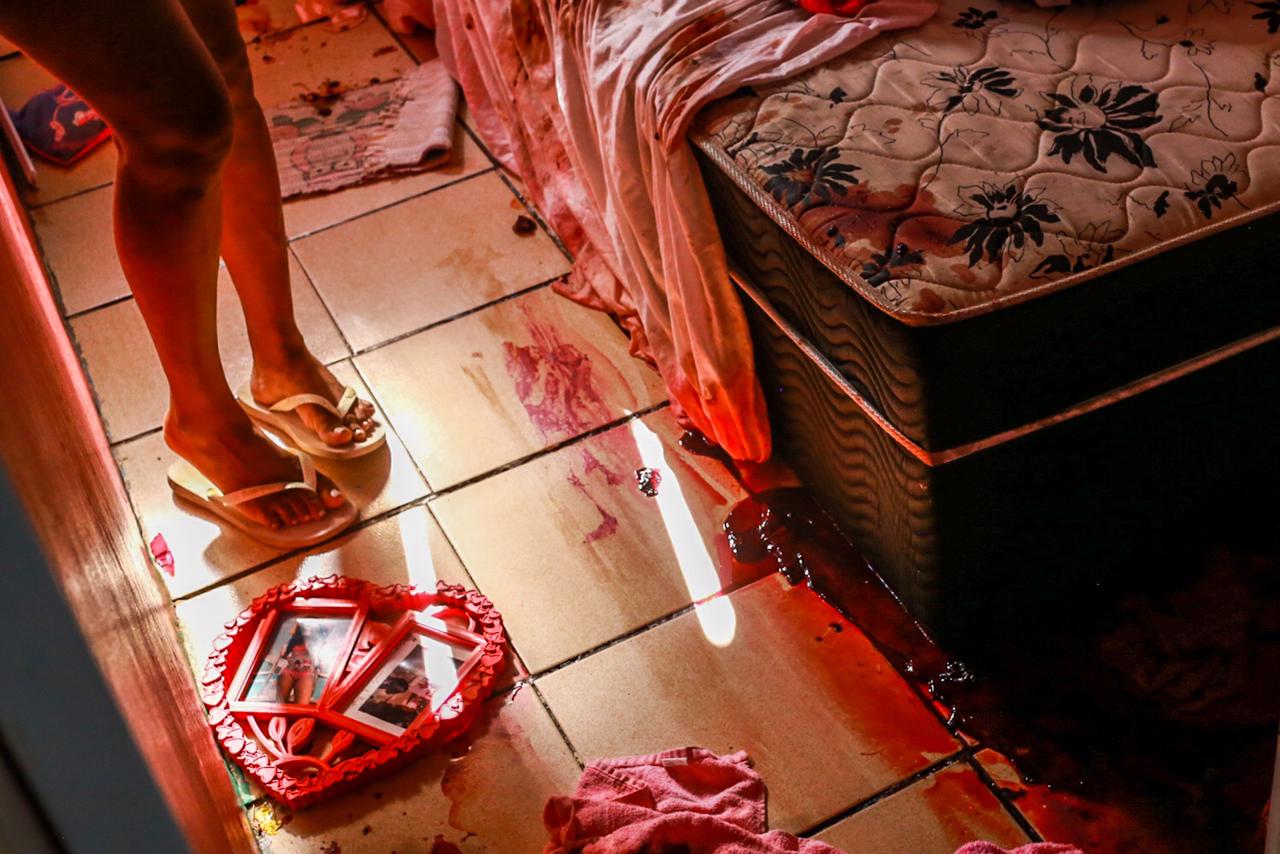
Clique aqui para Português
During the transition from 2023 to 2024, while most of Rio de Janeiro joyfully celebrated the world’s largest New Year’s Eve party, the Jacarezinho favela in the North Zone experienced a harsh reality: shootings and rights violations that underscore the stark disparity between our city’s different realities. In response to these tragedies, the State of Rio de Janeiro’s Public Defenders’ Office and the Fluminense Federal University’s Study Group on the New Illegalities (GENI/UFF), in collaboration with the Municipal Secretariat of Human and Citizens’ Rights of Niterói and the Ministry of Justice and Public Security, launched the Mirante Project. The initiative aims to investigate cases of police violence in favelas, which are frequently left unresolved by the Rio de Janeiro Civil Police (PCERJ).
Between Gunshots and Fireworks
After a month of police operations conducted in the Jacarezinho favela, RioOnWatch reporters spoke with a resident of the area, who recounted a year already marked by invasions and shootings. Reliving moments of pain and violence during an interview can retraumatize victims, so many people prefer not to respond. However, resident Maria*, 52, was willing to speak. She chose not to disclose her real name and preferred to conduct our conversation over the phone to safeguard her identity for security reasons. Over nearly an hour on the call, the voice of a mother victimized by the State was tearful and weary.
“At the beginning of the year, we residents once again lived through the violence of a police operation and the ensuing stray bullets. One woman almost lost her leg when she was coming home from work, alongside others who were shot, and we never heard from again. — Maria*
According to research conducted by the Fogo Cruzado Institute, January 2024 witnessed twenty shootings in Jacarezinho alone, resulting in two people dead and seven injured. The Institute also documented operations in other areas: in Brás de Pina, also in the North Zone, with nine shootings, two people dead, and one injured; Praça Seca, in the West Zone, with seven shootings and three fatalities; Gardênia Azul, also in the West Zone, saw six shootings, with four people dead and one injured; and in Éden, in São João de Meriti, in the Baixada Fluminense, there were six shootings and one person injured.
“It’s despairing! What infuriates us is the utter abandonment. What happened in January, what happened in 2021… It’s like nothing ever happened… we’d ask for help every day, morning till night, and now people had to go through this State-sanctioned violence all over again.” — Maria*

Three years ago, the Jacarezinho favela experienced one of the most difficult moments in its history, amidst the coronavirus pandemic: a police operation that became the deadliest massacre in the history of Rio de Janeiro. 28 people were killed, including 27 residents and one member of the Military Police. Maria* will never be able to forget that day, May 6, 2021. She carries in her memory the pain of losing her son, murdered by the police during the massacre.
“In reality, it’s painful to remember, but it’s an issue that cannot be ignored. It’s something that gives me the drive to fight, to give dignity, and to seek justice for my son and the 26 other young people killed. [It makes me want] to make it clear that when a boy or girl is murdered by the police, we cannot normalize their deaths or allow the authorities to just put our lives aside.” — Maria*
According to data from Fogo Cruzado, 2023 was the worst year for youth. At least 25 children were shot in the Rio de Janeiro metropolitan area, matching the number from 2018, when the state was under federal intervention. However, 2023 was the most lethal year for Rio’s children in the entire historical record. While four of the 25 children shot in 2018 died, in 2023, ten lost their lives.
‘We Need to Hold the State Accountable or It Will Continue Killing Us’
Maria* says that, in the case of the Jacarezinho Massacre, “the only one still under investigation is Omar Pereira.” Investigations into the other murders were closed, supposedly due to a lack of evidence.
“When I arrived at the Public Prosecutor’s Office in February, when they closed my son’s case, they claimed that the bullet holes [left in the furniture he was sitting on when he was shot and killed] could have been from another shooting… At the time, the prosecutors told me that I needed to have the piece of furniture if I wanted to go ahead with the case… but the police broke it and threw it in the river [to dispose of the evidence]… So, in order to have a case and move forward with the lawsuit, was I supposed to have recorded my son’s execution? For the courts, that would be the only way to understand my son’s death!” — Maria*
To keep her case from being closed, the Prosecutors’ Office also gave Maria* the option of finding more witnesses to the crime that claimed her son’s life. However, according to her, it is difficult to convince residents to testify, since the Integrated City Program, which has brought permanent police occupation to the favela, has already been implemented. “How can we speak out about anything, when the same police officers who participated in the massacre [are now working here and]… can invade our homes and do whatever they want with us? It’s like a silencing tactic.”
According to Fogo Cruzado, after the police occupation under the Integrated City project in 2022, the number of shootings increased by 79%. The data indicate that, between January of 2022 and 2024, there were 68 shootings, resulting in 13 people dead and 19 injured. Before the Integrated City initiative, during the same two-year period from 2020 to 2022, there were 38 shootings in the favela, with 28 dead and 11 injured.
To address issues such as these, hold the State accountable for poorly conducted investigations and cover-ups, and prevent premature closure due to lack of evidence, which are common in cases of police violence, the Public Defenders’ Office of Rio and the Study Group on New Illegalities (GENI) at the Fluminense Federal University (UFF) have introduced new research methodologies focused on cases of State violence.

Mirante Project: New Technologies and Methodologies for Investigating Cases of State Violence
On January 16, 2024, considered one of the worst days for the beginning-of-year operations in Jacarezinho, the Mirante Project was introduced at Rio’s Public Defenders’ Office, with funding from the Ministry of Justice and Public Security’s Secretariat for Access to Justice and Public Security (SAJU/MJSP). The collaboration between these institutions is an unprecedented initiative, involving the application and development of innovative methodologies and technologies for the independent investigation of violence during police interventions. In addition to the aforementioned institutions, other research groups have also contributed to the project, with the aim of strengthening and expanding policies in support of public security and human rights.
For Daniel Hirata, coordinator and researcher at GENI/UFF, the project will be crucial for challenging evidence and criminal narratives regarding police actions. In Brazil, according to the researcher, only police authorities have the ability to conduct reports on police interventions.
“In other countries, independent organizations carry out third-party forensic investigations, but here we need to defer to the police first. It’s a bottleneck in our situation, since the very same institutions that commit violations are the ones conducting the inquiries and producing the reports. I don’t think this lack of impartiality is healthy for anyone—not for the victims’ families, not even for the police.” — Daniel Hirata, coordinator and researcher at GENI/UFF
During the presentation of the Mirante Project, the research group stressed the use of images (photos and videos) produced by residents and families of the victims of police violence. They demonstrated that these visuals have become integral for collecting evidence for the systematization and analysis of data and documents related to cases of police violation and violence. They also underscored how these images bolster investigations, providing a counterbalance to the police’s criminal narratives, and offer technical support to members of the Rio Public Defenders’ Human Rights Nucleus (Nudedh), advocating for victims of institutional violence.
The main proposal involves revising and drafting independent criminal reports, including ballistic analyses, autopsies, and on-site reconstructions, drawing on expertise from anthropology, architecture, sociology, communication, psychology, data science, and forensic science.
One of the first cases investigated within the purview of the Mirante Project was that of Omar Pereira da Silva, one of the 27 victims of the Jacarezinho Massacre. In collaboration with the Public Defenders’ Office and GENI/UFF, experts Cássio Thyrone Almeida de Rosa and Flávia Palladino presented a technical assessment and a 3D reconstruction video of the crime involving the young Jacarezinho resident. He was fatally shot in the chest at close range by an officer from the Special Resources Coordination (CORE) of the Rio de Janeiro Civil Police: Douglas de Lucena Peixoto Siqueira.
Initially, the project will analyze 30 cases of State violence, including: the Jacarezinho Massacre; the deaths of Emily and Rebecca, two cousins killed in 2020 in Duque de Caxias, in the Baixada Fluminense; the killing of Guilherme Lucas, a janitor and resident of Morro da Coroa, who was murdered while leaving a funk dance in the Santo Amaro favela, in Catete, in the South Zone of Rio; and the death of Lucas Albino, a student killed in 2019 in Costa Barros, in the city’s North Zone. The Mirante Project will also examine the case known as the Paraisópolis Massacre, which took place in São Paulo in 2019.
*The interviewee’s name is fictional to protect her privacy.
About the author: Ramon Vellasco is a freelance photojournalist and reporter, born and raised in Vila da Penha. He focuses on issues related to human rights, culture, education, diversity, and marginalized social groups, primarily working in peripheral, favela, and suburban areas.
